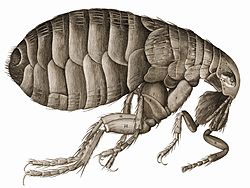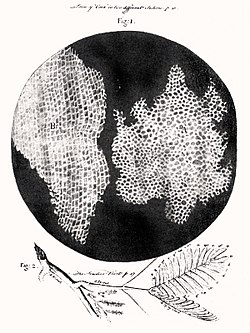 Title page of Micrographia | |
| Author | Robert Hooke |
|---|---|
| Original title | Micrographia: or Some Physiological Descriptions of Minute Bodies Made by Magnifying Glasses. With Observations and Inquiries Thereupon |
| Language | English |
| Genre | Microscopy |
| Publisher | The Royal Society |
Publication date | January 1665 |
| Publication place | Great Britain |
Micrographia: or Some Physiological Descriptions of Minute Bodies Made by Magnifying Glasses. With Observations and Inquiries Thereupon is a historically significant book by Robert Hooke about his observations through various lenses. It was the first book to include illustrations of insects and plants as seen through microscopes.
Contents
Published in January 1665, the first major publication of the Royal Society, it became the first scientific best-seller, inspiring a wide public interest in the new science of microscopy. [1] The book originated the biological term "cell".







